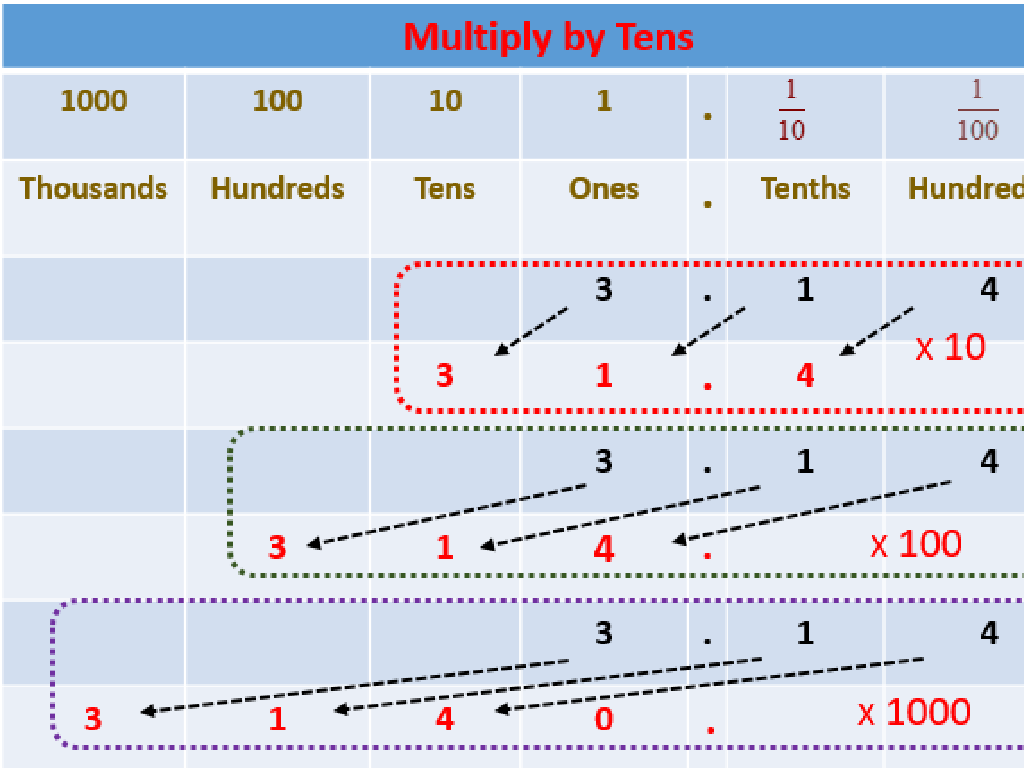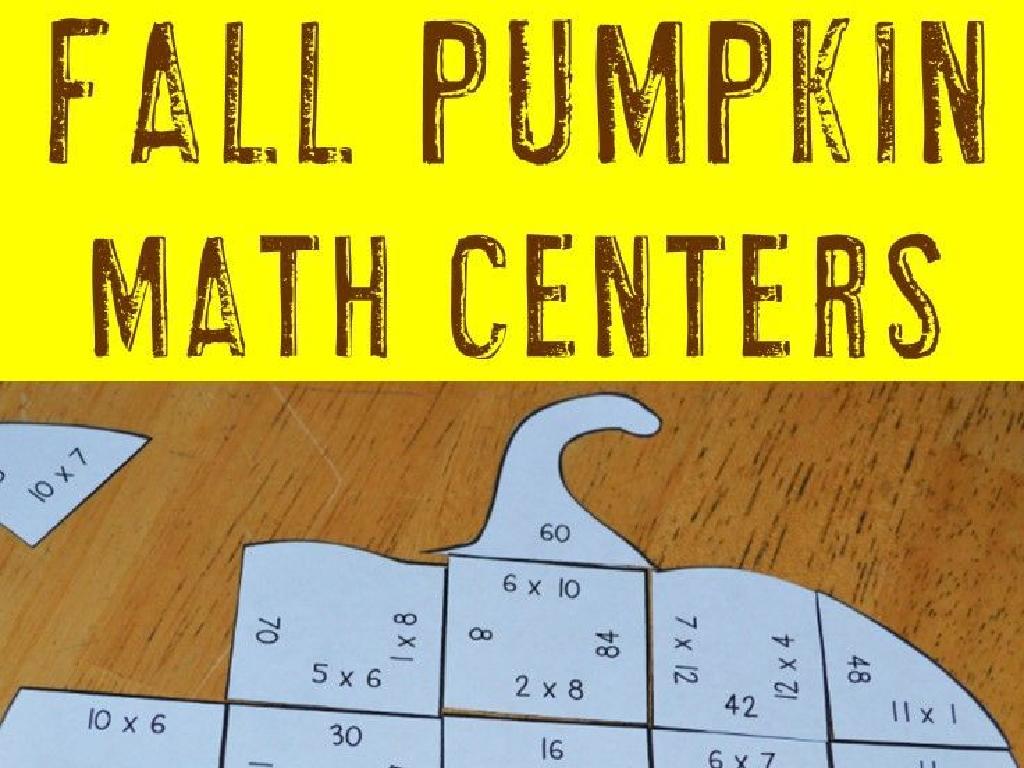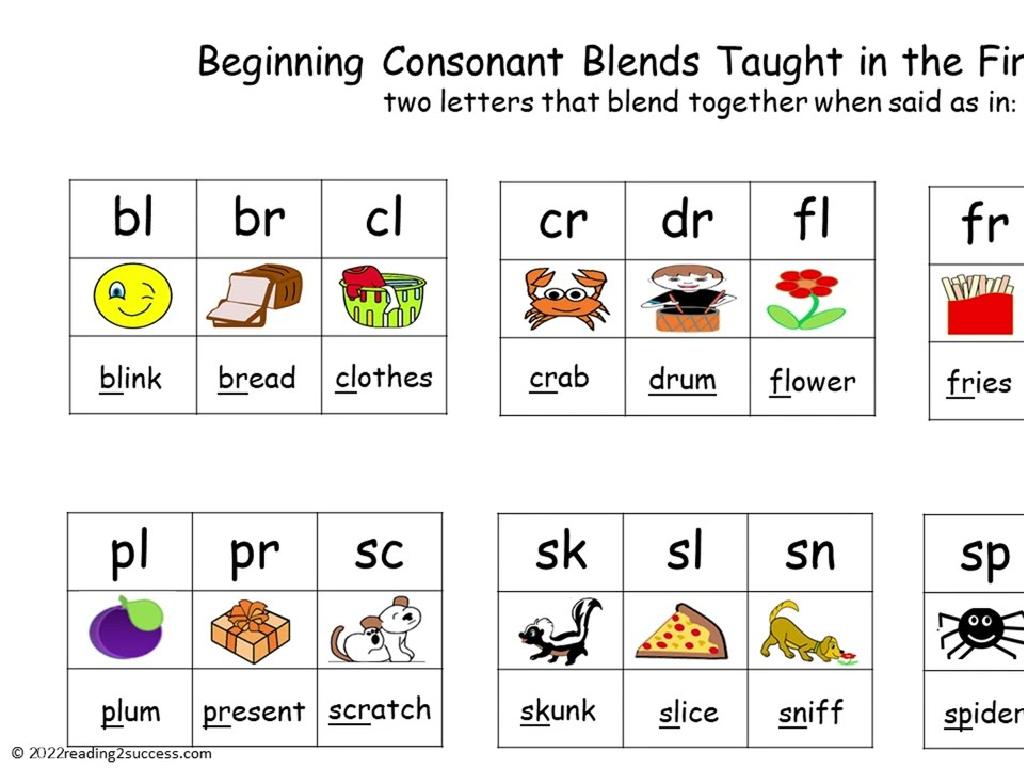Add And Subtract Like Terms: With Exponents
Subject: Math
Grade: Seventh grade
Topic: Equivalent Expressions
Please LOG IN to download the presentation. Access is available to registered users only.
View More Content
Introduction to Equivalent Expressions
– Define equivalent expressions
– Expressions that simplify to the same value
– Criteria for expressions’ equivalence
– They must have the same terms and exponents
– Simple equivalent expression examples
– 3x + 2x = 5x or a^2 + a^2 = 2a^2
– Exponents in equivalent expressions
– Like terms with exponents can be combined
|
This slide introduces the concept of equivalent expressions, which are fundamental in algebra. Equivalent expressions are different algebraic statements that simplify to the same value. For expressions to be considered equivalent, they must contain the same variables to the same powers. Provide examples of simple equivalent expressions, such as combining like terms without exponents and then with exponents. Emphasize that understanding the properties of exponents is crucial when dealing with terms that include them. Encourage students to practice combining like terms with exponents to become comfortable with the concept of equivalent expressions.
Combining Like Terms with Exponents
– Define Like and Unlike Terms
– Terms with the same variable parts and exponents, e.g., 3x^2 and 5x^2
– Combining Like Terms Only
– Only terms with the same variables and exponents can be added or subtracted
– Identifying Terms in Expressions
– Look for terms that have identical variables raised to the same power
– Practice with Exponents
– Combine 2a^3 + 4a^3 and subtract 5x^2 – 3x^2
|
This slide introduces the concept of like and unlike terms, focusing on terms with exponents. Like terms have the same variable raised to the same power and can be combined through addition or subtraction. It’s crucial for students to understand that unlike terms cannot be combined because they represent different quantities. Provide examples of like terms with exponents and guide students through the process of identifying and combining them in algebraic expressions. Encourage practice by combining terms with exponents to reinforce the concept. This foundational skill is essential for simplifying expressions and solving equations in algebra.
Understanding Exponents in Like Terms
– Exponents: A brief overview
– Exponents show how many times to use a number in a multiplication.
– Exponents’ role in like terms
– Only terms with the same base and exponent can be combined.
– Identifying like terms with exponents
– Like terms: 3x^2 and 5x^2 are like terms, but 3x^2 and 3x^3 are not.
– Practice with examples
– Add or subtract coefficients of like terms: 3x^2 + 5x^2 = 8x^2.
|
This slide introduces students to the concept of exponents and their significance in combining like terms. Begin by explaining what exponents are and how they are used to represent repeated multiplication. Emphasize that when adding or subtracting like terms, the exponents must be the same because they indicate the degree of the term. Provide clear examples to illustrate like terms with exponents, showing that while the coefficients can be different, the base and exponent must match for the terms to be considered ‘like.’ Encourage students to practice with additional examples and to pay close attention to the exponents when determining if terms are like or unlike.
Adding Like Terms with Exponents
– Rules for adding like terms
– Only add terms with the same base and exponent, e.g., 3x^2 + 4x^2 = 7x^2
– Example problem walkthrough
– Let’s solve 2a^3 + 5a^3 and 4m^2n – 2m^2n together
– Common mistakes to avoid
– Don’t add terms with different exponents or bases, e.g., x^2 + x^3 ` x^5
– Practice problem set
|
This slide introduces students to the concept of adding like terms with exponents, a key skill in algebra. Start by explaining the rules: like terms have the same variable raised to the same power. Emphasize that students must check both the base and the exponent before adding. Walk through example problems step by step, showing how to combine coefficients of like terms. Highlight common mistakes, such as combining unlike terms or misapplying exponent rules. Conclude with a set of practice problems for students to try, ensuring they apply the rules correctly. This will prepare them for more complex algebraic expressions and help solidify their understanding of equivalent expressions.
Subtracting Like Terms with Exponents
– Rules for subtracting like terms
– Only subtract terms with the same base and exponent, e.g., 5x^3 – 3x^3
– Example problem walkthrough
– Let’s subtract 2a^2 – 5a^2 step by step
– Importance of negative signs
– Remember, subtracting a negative is like adding a positive
– Practice problem set
|
This slide introduces the rules for subtracting like terms with exponents, emphasizing that terms must have the same base and exponent to be considered ‘like terms.’ Walk students through an example problem to demonstrate the process. Highlight the importance of keeping track of negative signs, as this is a common area where mistakes can occur. Provide a set of practice problems for students to apply what they’ve learned. Remind them to pay close attention to the signs of the terms they are subtracting to avoid errors. Encourage students to work through the problems methodically and check their work.
Practice: Adding & Subtracting Like Terms with Exponents
– Identify like terms in expressions
– Like terms have the same variable and exponent, e.g., 3x^2 and 5x^2
– Combine like terms correctly
– Add or subtract coefficients; 3x^2 + 5x^2 = 8x^2
– Apply exponent rules
– Remember: Only add/subtract exponents when multiplying/dividing terms
– Solve practice problems together
|
This slide is aimed at providing students with practice problems to reinforce their understanding of adding and subtracting like terms with exponents. Start by guiding students to identify terms with the same variable raised to the same power. Emphasize the importance of combining only the coefficients of like terms and leaving the variable and exponent unchanged. Remind them of the rules for exponents, particularly that exponents should only be added or subtracted when multiplying or dividing terms, not when adding or subtracting. Work through several examples as a class, and encourage students to solve problems in pairs or small groups, fostering a collaborative learning environment.
Class Activity: Simplifying Exponential Expressions
– Group activity: create expressions
– Exchange with a partner to simplify
– Ensure each term has the same base and exponent before adding or subtracting
– Discuss solutions and methods
– Share different strategies used for simplifying
– Reflect on the activity
– Discuss what was learned and any challenges faced
|
This activity is designed to promote collaborative learning and reinforce the concept of like terms with exponents. Divide the class into small groups and have each group create algebraic expressions with exponents. Then, have them exchange their expressions with another group to practice simplifying. Afterward, lead a class discussion to compare solutions and the different approaches taken. Encourage students to reflect on their learning process and the strategies that worked best. Possible activities for different students could include creating expressions with varying levels of complexity, simplifying expressions provided by the teacher, or finding real-life examples of exponential expressions.
Conclusion & Homework: Mastering Like Terms with Exponents
– Recap: Adding & subtracting like terms
– Review the rules for combining terms with the same base and exponent
– Practice is key to mastery
– Regular practice helps solidify the concept of equivalent expressions
– Homework: Worksheet on like terms
– Complete the provided worksheet to practice skills learned
– Strive for understanding, not just completion
– Focus on grasping the concepts behind the operations, not just finishing the task
|
As we conclude today’s lesson on adding and subtracting like terms with exponents, remember that understanding the rules for combining like terms is crucial for working with equivalent expressions. The homework assignment is a practice worksheet that will help reinforce today’s lesson. Encourage students to approach each problem methodically, ensuring they understand the process of combining like terms with exponents. Remind them that the goal of homework is to deepen their understanding of the material, not just to complete the tasks. During the next class, we will review the homework answers and address any questions to ensure everyone is confident with the concept.





